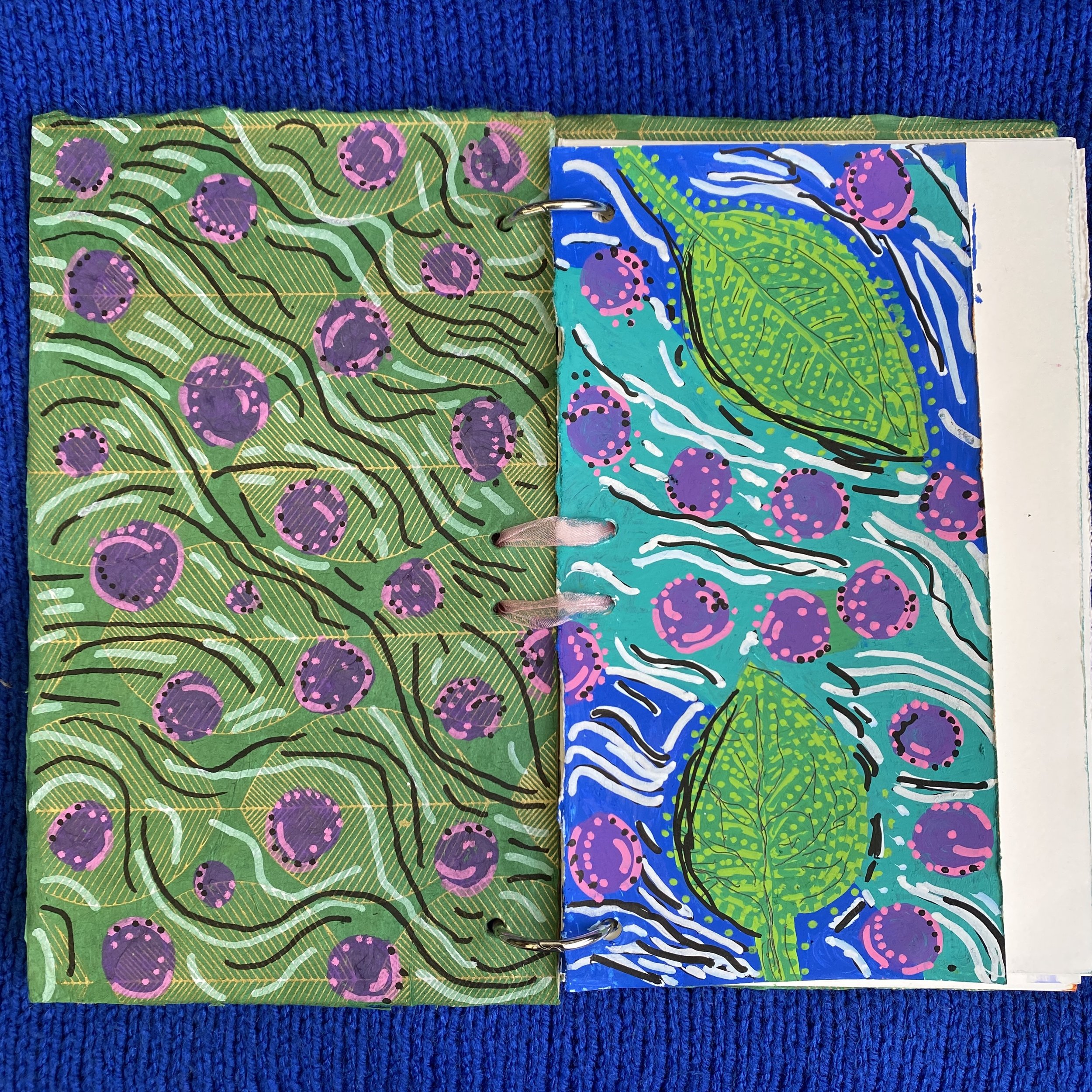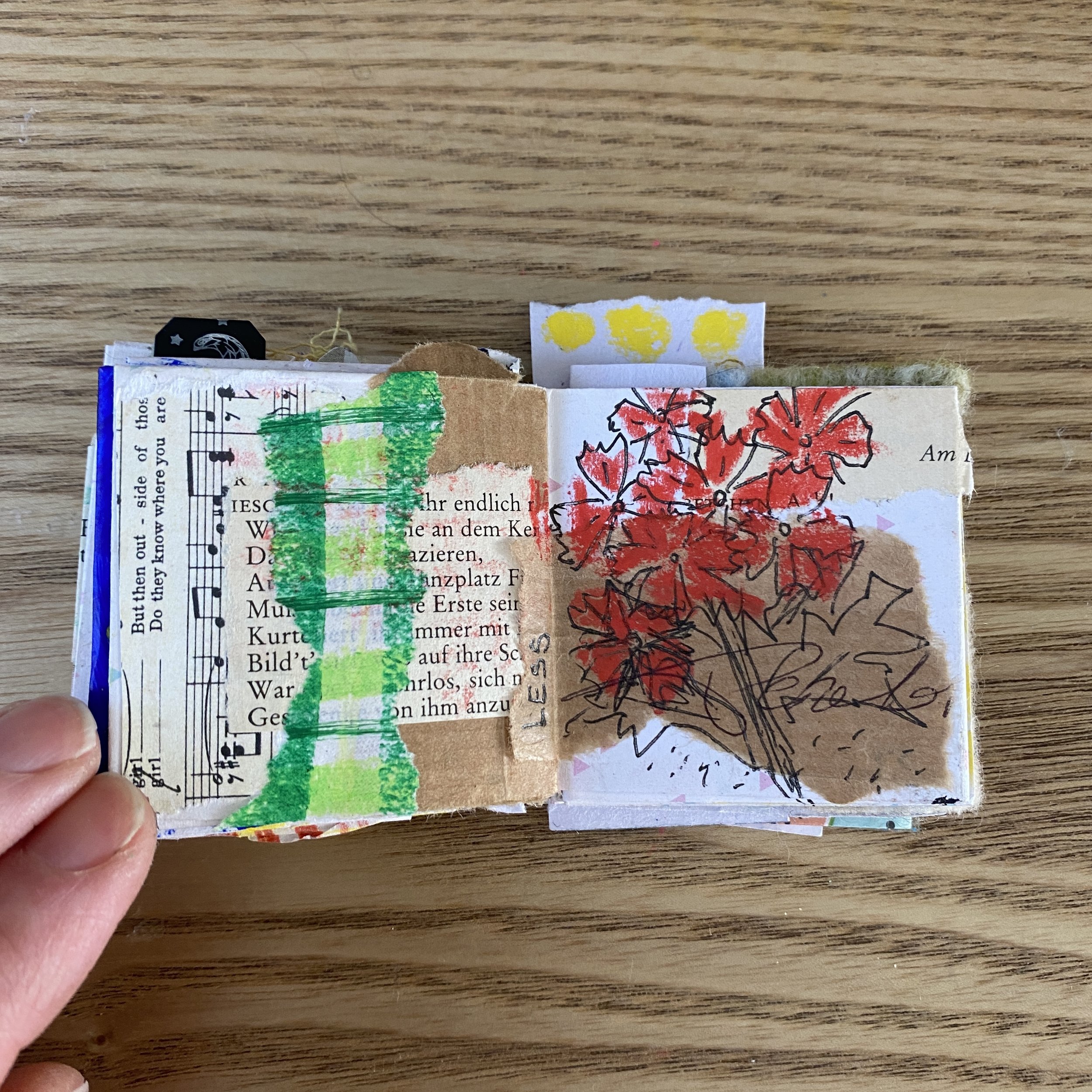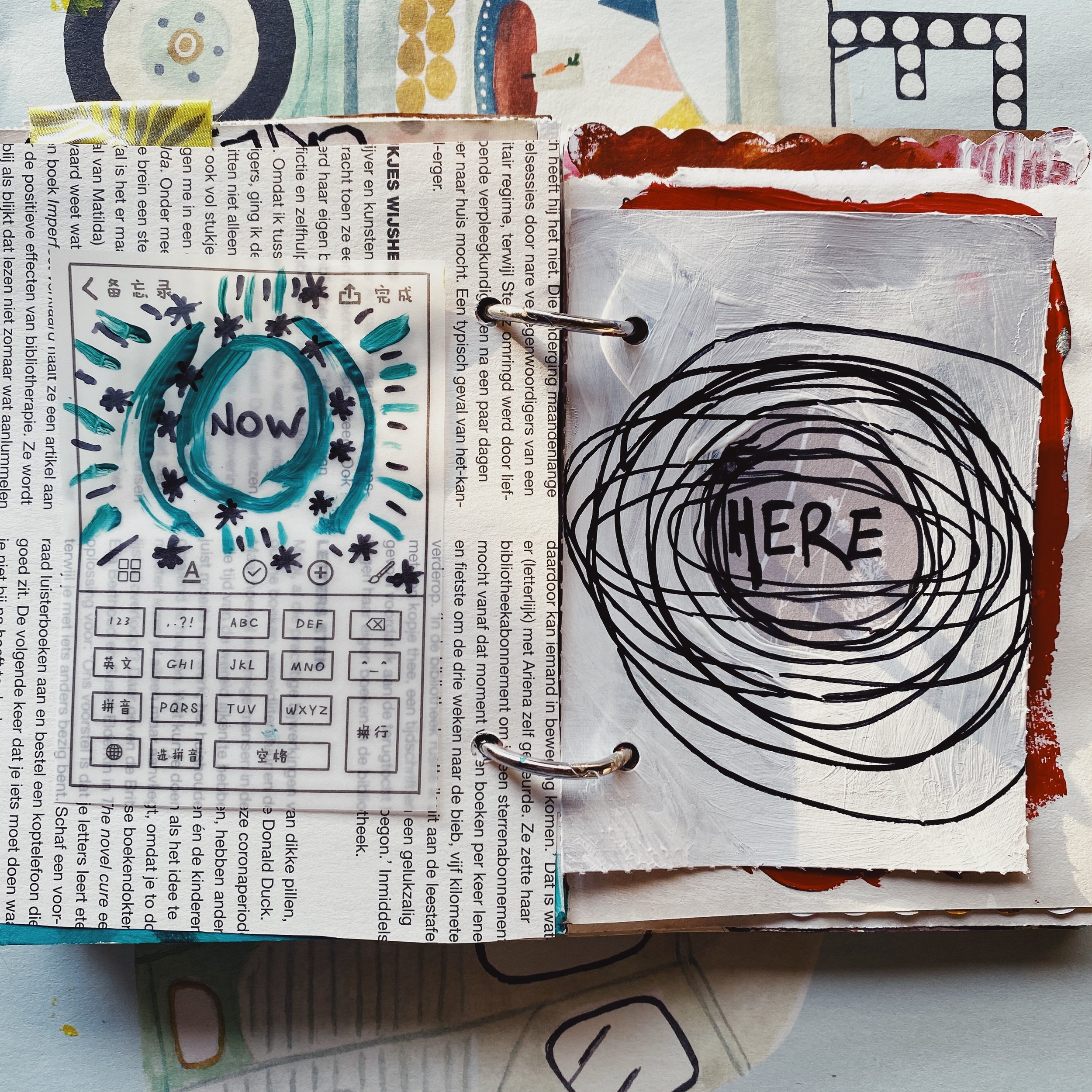Art journaling: what, how and why
You may have heard of art journaling or seen it on Pinterest or Instagram, but aren’t sure what it is or how to get started.
Maybe you've even attempted it and found that it wasn't as easy as people said it would be. This article will help answer all your questions about art journaling—from what it is and how to get started, all the way up to tips for improving your skills and accessorising (probably over-accessorising, let’s be fair) your new favourite hobby.
What is art journaling?
Art journaling is a mix between visual journaling, art experimentation, and a kind of self-directed art therapy. The informal, personal nature of art journaling means you can:
Experiment with different materials and techniques without judgment
Process your thoughts and feelings at your own pace
Create without concern for artistic skill or aesthetic outcome
Combine words and images in whatever way feels meaningful to you
My art journal practice is all about embracing the messy middle and breaking the tyranny of the blank page. It’s about smudges, mistakes, perfect imperfection, and just getting those expressions down on paper. Art supplies I love include any combination of pencils, paint, printing, imagery (drawings, photographs) and words.
What exactly is it, though?
It’s like is a form of personal art and visual journaling. It’s a creative process that can be used to record your life, express your feelings, explore ideas, capture memories, research new topics and practice skills.
Art journaling can be done in many different ways—by writing or doodling on paper; painting on canvas; using glue and other materials found around the house (such as twigs or leaves or in my case, pieces of your baby’s cast-off clothes, or old photos); using pencils, pens or markers; collage work with cut-out images from magazines or printed pictures glued onto the page—the list goes on!
The best thing about it is that, while you see loads of it shared every day on social media, art journaling doesn’t have to be for anyone’s eyes but your own.
What makes an art journal different from other journals?
An art journal is a place to store all your creative ideas, record your thoughts, feelings and experiences. It's where you doodle and paint, collage and cut out. Most importantly, it's the perfect place to keep all your art supplies.
In this way, it’s easy to see how it’s much more than just another form of diary or notebook that holds your personal letters or other documents. It's an invaluable tool in helping you create artwork—any time of the day or night.
Who can art journal?
Art journaling is for everyone! It’s an accessible, non-judgemental form of art that can be practiced by anyone at any age, with or without experience in the visual arts. Whether you're a kid just learning to draw or an expert painter looking to try something new, art journaling has something for you. It's also great if you have tried it before but want something new and different—or maybe even if you have never tried it before!
I’ve been drawing since I could hold a pencil, but I never went to art college - and that’s fine. My art journal doesn’t care if I’m good or bad at what I make, just that it’s filled up with art.
How do I get started with art journaling?
Start by choosing a notebook, with either paper or canvas pages (or both!). You can also use fabric.
I find that my favourite and most fulfilling creations are born out of limitation. The books I’ve been creating in recent months, and the art inside them, has been smaller and smaller - and I’m loving it! That’s why I suggest you choose a theme for your art journal. This is the first step towards making journaling an enjoyable process. A good theme will help you stay focused throughout the entire process of creating your art journal and will give you something meaningful to focus on when things are getting difficult or boring.
Now you can choose your mediums: (in my case, it’s, uh, all of them. ALL. THE. MEDIUMS.): paint, pencils, pens and ink are just some of the many possibilities! Tools such as brushes are also important because they allow us freedom without any restrictions whatsoever so make sure they're nice enough quality before purchasing them - otherwise they may break easily which could be very stressful if there aren't any backups available (but again, in my case, there usually is. So many backups. Why buy one of something when you can have 10?). You might want to consider adding some adhesive materials like glue sticks onto this list too; although not necessary for completing most projects successfully - these could come in handy during emergencies where we need extra assistance from unexpected sources such as friends/family members who don’t know anything about arts & crafts etc...
“If you’re looking at all your new art materials and are feeling awash with overwhelm (ah yes, my old friend), pick two things and just start making marks with those in your book. You might be surprised where you end up.”
What tools do I need for art journaling?
There are a lot of materials available for art journaling. You can use literally anything—from old magazines and newspapers to coffee filters, cardboard and paint. It's up to you!
One thing is for sure though: You'll need something to write with or draw on. Some great options include pens like dual brush pens (which are like paint brushes) or colouring pencils if you're looking for something more traditional. To add texture and dimension, try using glue sticks or even your fingers as tools.
If you're feeling fancy and have some extra cash lying around, I highly recommend buying some nice watercolour paper blocks at your local craft shop. I love their soft feel and how they react under basically any medium I’ve tried so far on them.
Art journaling is a fun, flexible and easy way to unlock your creativity
It's also important to note that art journaling doesn't have to be confined to paper - it can include other materials like fabric, wood or even glass. The possibilities are endless.
So, with all that said: there are many ways to get started with art journaling. I hope that this article has given you an idea of what it’s all about. Don’t be afraid to experiment and have fun!
If you’re looking at all your new art materials and are feeling awash with overwhelm (ah yes, my old friend), pick two things and just start making marks with those in your book. You might be surprised where you end up.





